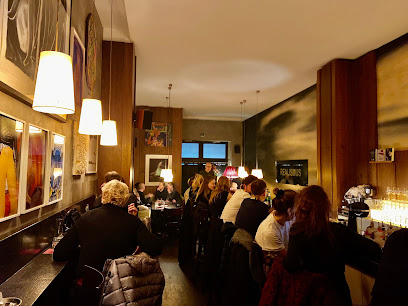
Memorial to Europe's Sinti and Roma Murdered Under Nazism: A Somber Tribute
Explore the Memorial to Europe's Sinti and Roma Murdered Under Nazism in Berlin - a poignant tribute to history and human rights.
The Memorial to Europe's Sinti and Roma Murdered Under Nazism stands as a poignant reminder of the atrocities committed during the Holocaust. Located in Berlin, this historical landmark invites tourists to reflect on the past while honoring the memory of those lost. With its striking design and serene surroundings, it serves as both a memorial and an educational site, making it a must-visit for anyone interested in history and human rights.
A brief summary to Memorial to Europe's Sinti and Roma Murdered Under Nazism
- Simsonweg, Berlin, Mitte, 10117, DE
- Visit website
- Monday 12 am-12 am
- Tuesday 12 am-12 am
- Wednesday 12 am-12 am
- Thursday 12 am-12 am
- Friday 12 am-12 am
- Saturday 12 am-12 am
- Sunday 12 am-12 am
Local tips
- Visit early in the morning or late in the evening for a quieter experience.
- Take the time to read the informational plaques to fully appreciate the memorial's significance.
- Combine your visit with nearby attractions like the Brandenburg Gate for a comprehensive historical tour.
- Respect the solemn nature of the site by maintaining a quiet demeanor.
Getting There
-
U-Bahn (Subway)
If you are near Alexanderplatz, take the U8 line towards Wittenau. Change at the stop 'Bernauer Straße' to the U2 line towards Ruhleben. Get off at 'Potsdamer Platz' station. From there, it's about a 10-minute walk. Exit the station and walk towards 'Potsdamer Platz' square. Head northwest on 'Potsdamer Str.' and turn right onto 'Ebertstraße'. Continue straight until you reach 'Simsonweg', where the memorial is located.
-
Bus
From 'Alexanderplatz', take bus line 100 towards 'Zoologischer Garten'. Get off at 'Potsdamer Platz' and walk in the direction of 'Potsdamer Str.' Exit the square and walk northwest to 'Ebertstraße'. Continue straight until you reach 'Simsonweg'. The memorial is located there.
-
Tram
If you are near 'Alexanderplatz', take tram line M4 towards 'Zoologischer Garten'. Change at 'Hauptbahnhof' to tram line M5 towards 'Hakenfelde'. Get off at 'Reichstag/Bundestag', which is about a 5-minute walk from the memorial. Head east on 'Paul-Löbe-Allee' and turn left onto 'Simsonweg', where the memorial is situated.
-
Walking
If you are near the Brandenburg Gate, simply walk south towards the 'Reichstag' building. Continue past the 'Reichstag' and head towards 'Simsonweg'. The memorial will be located in the garden area between the Brandenburg Gate and the Reichstag. It is a short, pleasant walk from the historic sites.
Discover more about Memorial to Europe's Sinti and Roma Murdered Under Nazism
Iconic landmarks you can’t miss
Platz d. Republik
0.2 km
Discover the political heart of Berlin at Platz d. Republik, home to the iconic Reichstag and a vibrant square filled with history and culture.
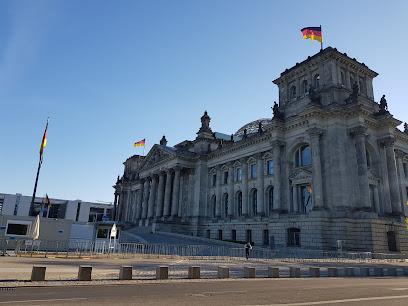
Tourist Information at Brandenburg Gate
0.2 km
Discover Berlin's essential travel resources at the Tourist Information Center located at the historic Brandenburg Gate for an enriching experience.
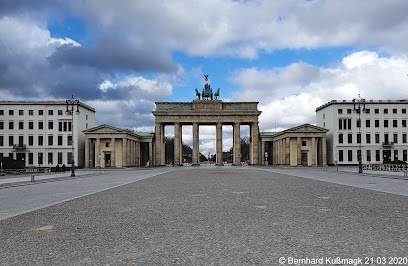
Jakob-Kaiser-Haus
0.2 km
Discover Jakob-Kaiser-Haus, a modern architectural gem in Berlin, symbolizing democracy and political heritage in the heart of Germany.

Konrad-Adenauer-Straße 1
0.3 km
Discover the stunning architecture and historical context of Konrad-Adenauer-Straße 1, a modern gem in the heart of Berlin's Mitte district.
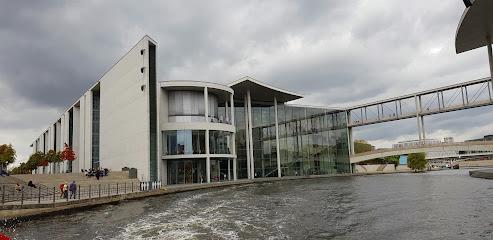
Paul Loebe Building
0.3 km
Discover the striking Paul Löbe Building, a modern architectural gem in Berlin's political heart, showcasing the blend of design and democracy.
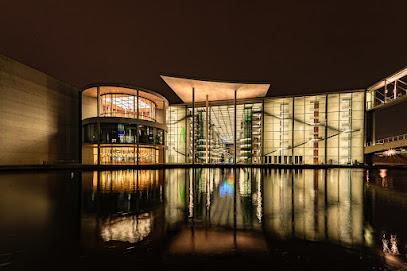
Goethe Monument
0.4 km
Discover the Goethe Monument in Berlin, a stunning tribute to Germany's literary genius amidst the city's vibrant cultural landscape.
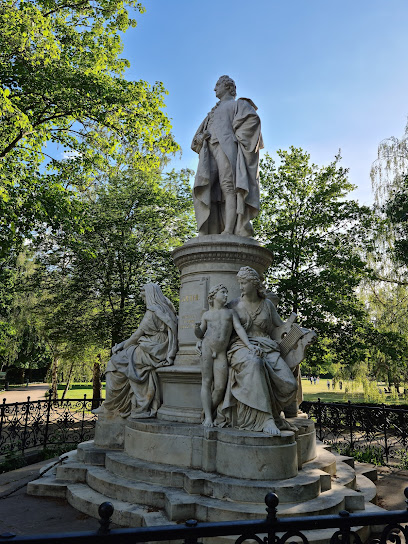
British Embassy Berlin
0.4 km
Explore the British Embassy in Berlin - a blend of modern architecture and rich diplomatic history in the heart of Germany.
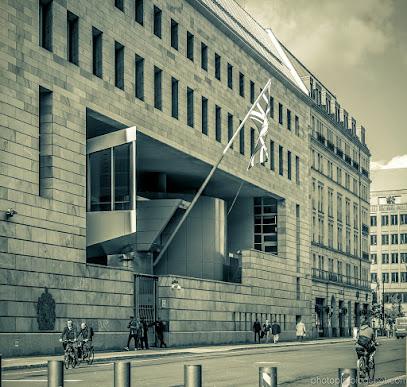
Verwaltung des Deutschen Bundestages
0.4 km
Discover the rich history and stunning architecture of the German Bundestag, a pivotal symbol of democracy in Berlin's vibrant Mitte district.
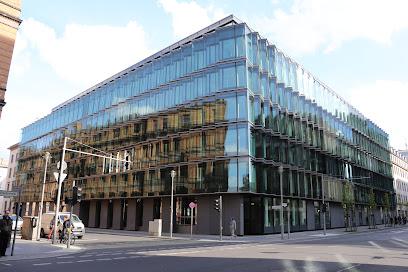
Embassy of Russia in Berlin
0.5 km
Explore the Embassy of Russia in Berlin, a stunning architectural landmark on Unter den Linden, reflecting rich history and cultural diplomacy.

Bundeskanzleramt Berlin
0.6 km
Explore the Bundeskanzleramt, Berlin's architectural gem and the heart of German government, surrounded by lush gardens and rich history.

Schiffbauerdamm
0.6 km
Explore Schiffbauerdamm, a historic waterfront in Berlin known for its vibrant culture, scenic river views, and rich artistic heritage.
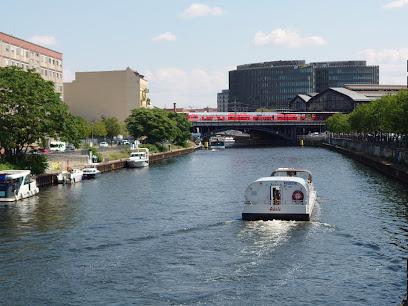
Rudolf Virchow Monument
0.6 km
Discover the Rudolf Virchow Monument in Berlin, a tribute to a pioneer of modern medicine, set in the vibrant Mitte district.

Johann Georg Elser Memorial
0.7 km
Explore the Johann Georg Elser Memorial in Berlin, a poignant tribute to courage, resistance, and the fight against tyranny in history.
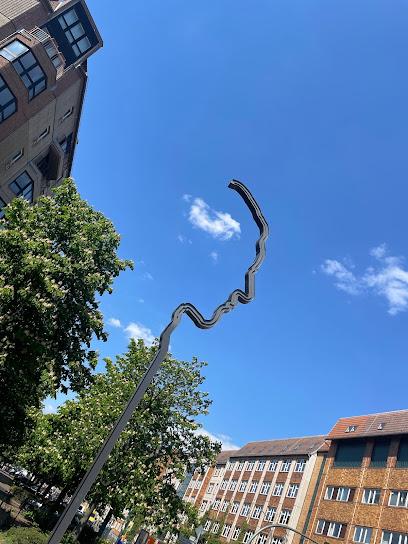
Albrecht von Graefe
0.7 km
Discover the Albrecht von Graefe sculpture in Berlin, where art meets the legacy of ophthalmology in a vibrant urban setting.
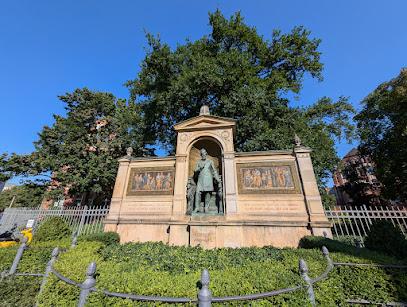
Tränenpalast
0.8 km
Explore the profound stories of separation and reunification at Tränenpalast, a pivotal history museum in the heart of Berlin.
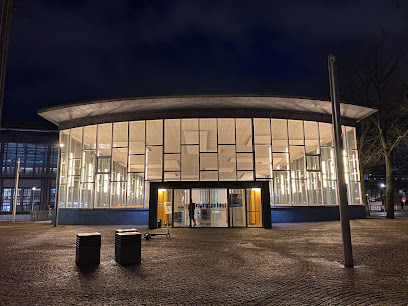
Unmissable attractions to see
Ronald Reagan Gedenktafel
0.1 km
Explore the Ronald Reagan Gedenktafel in Berlin: a historical landmark commemorating leadership and unity during the Cold War era amidst vibrant city life.
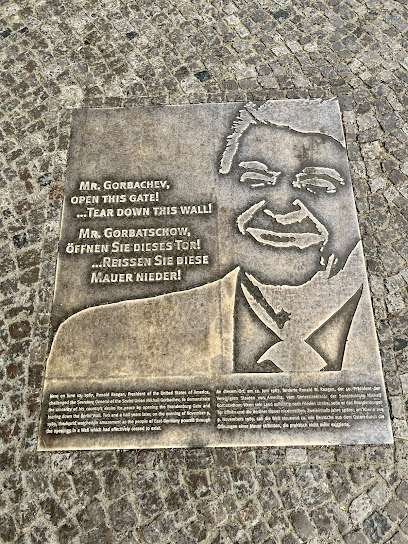
Bundestag
0.1 km
Discover the iconic Bundestag in Berlin, where politics meets stunning architecture and rich history, embodying the essence of German democracy.

Memorial to the Murdered Members of the Reichstag
0.1 km
Explore the Memorial to the Murdered Members of the Reichstag in Berlin, a poignant tribute that reflects on the strength of democracy and the importance of remembrance.
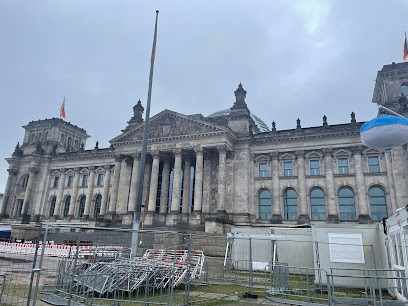
Max-Liebermann-Haus
0.1 km
Discover the artistic legacy of Max Liebermann at the Max-Liebermann-Haus, a serene cultural center in the heart of Berlin, near the Brandenburg Gate.
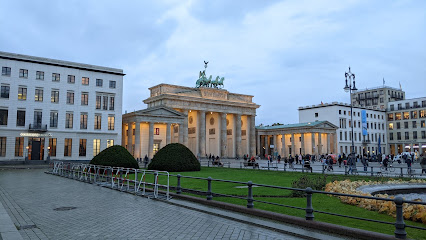
Stiftung Brandenburger Tor
0.1 km
Explore the rich artistic heritage of Berlin at Stiftung Brandenburger Tor, where history meets contemporary expression in a unique museum experience.
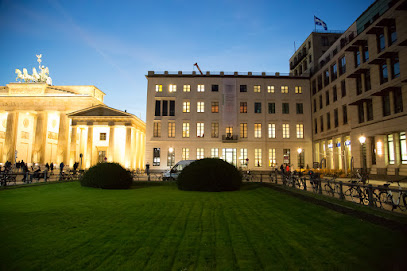
Platz des 18. März
0.1 km
Explore the vibrant history and culture at Platz des 18. März, a must-visit square in the heart of Berlin, surrounded by iconic landmarks and local charm.
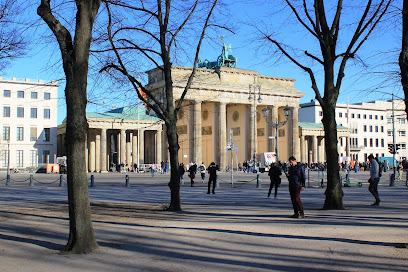
Reichstag Building
0.1 km
Explore the historic Reichstag Building in Berlin, a masterpiece representing democracy with stunning views and rich political history.

Reichstagskuppel
0.2 km
Experience Berlin from above at the spectacular Reichstagskuppel, a stunning symbol of democracy with panoramic city views.

Raum Der Stille
0.2 km
Discover tranquility at Raum Der Stille, a peaceful retreat in Berlin's iconic Pariser Platz, perfect for reflection and rejuvenation during your travels.
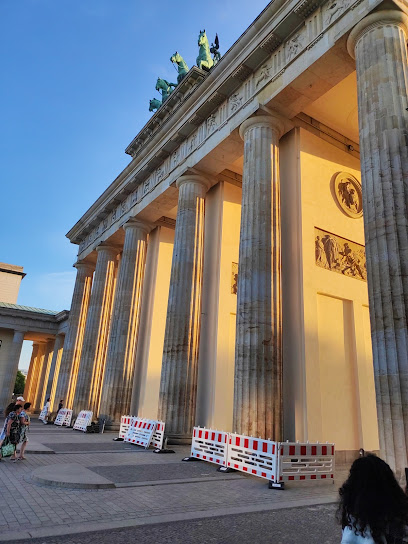
Brandenburg Gate
0.2 km
Discover the historic Brandenburg Gate, a stunning neoclassical arch symbolizing Berlin's unity and resilience, located at Pariser Platz.

Der Rufer
0.2 km
Explore 'Der Rufer', a remarkable sculpture in Berlin symbolizing peace and freedom, enriching your understanding of the city's rich history.

Ehemaliges Reichstagspräsidentenpalais
0.2 km
Explore the Ehemaliges Reichstagspräsidentenpalais, a historical landmark in Berlin that embodies the city's vibrant political history and stunning architecture.
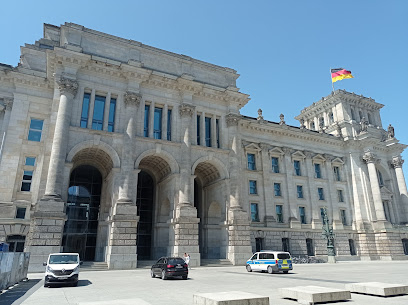
Pariser Platz
0.2 km
Explore the historical significance and architectural beauty of Pariser Platz, the iconic square at the heart of Berlin's vibrant culture.
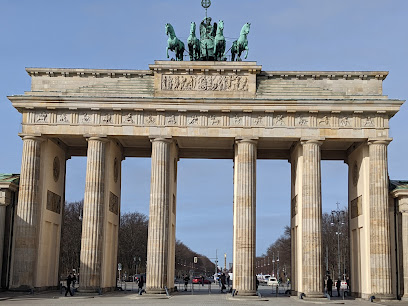
Platz der Republik
0.2 km
Discover the beauty of Platz der Republik, a serene state park nestled beside Berlin's iconic Reichstag, perfect for relaxation and exploration.
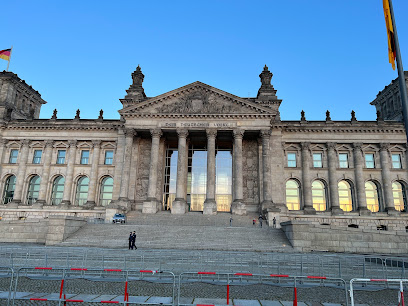
Pilecki-Institut
0.3 km
Explore the Pilecki Institute in Berlin, a museum dedicated to the legacy of Witold Pilecki and the stories of resistance during WWII.

Essential places to dine
Lorenz Adlon Esszimmer
0.3 km
Experience unparalleled fine dining at Lorenz Adlon Esszimmer in Berlin – where modern European cuisine meets historic elegance.
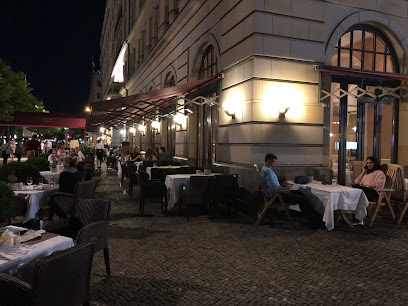
Berliner Republik
0.8 km
Discover Berliner Republik: A Culinary Haven in Berlin's Mitte District Offering Authentic German Cuisine and Lively Atmosphere.
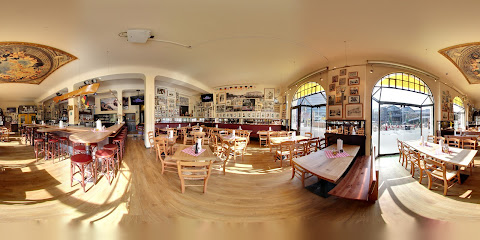
Nante-Eck
0.8 km
Experience authentic German cuisine at Nante-Eck in Berlin’s Mitte district—where tradition meets taste in a cozy atmosphere.
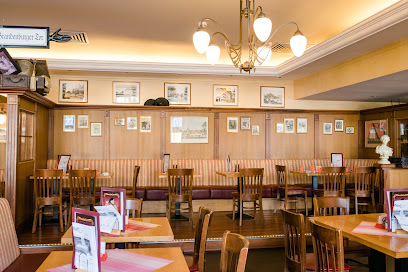
Bocca di Bacco
0.9 km
Experience authentic Italian cuisine at Bocca di Bacco in Berlin – where tradition meets elegance in every dish.
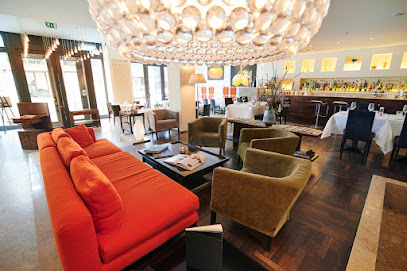
Restaurant Facil
0.9 km
Experience culinary artistry at Restaurant Facil in Berlin – where exquisite flavors meet modern elegance in fine dining.

Charlotte & Fritz
1.0 km
Experience the pinnacle of fine dining at Charlotte & Fritz, where exquisite flavors meet elegant ambiance in Berlin's Mitte district.

Grill Royal
1.1 km
Experience exceptional steaks and vibrant ambiance at Grill Royal in Berlin’s Mitte district.

Boulevard Friedrichstrasse
1.1 km
Experience authentic German cuisine at Boulevard Friedrichstrasse, where tradition meets taste in the heart of Berlin.

Restaurant Maximilians Berlin
1.1 km
Experience authentic Bavarian cuisine at Restaurant Maximilians in Berlin's Mitte district—where every meal is a celebration of flavor.
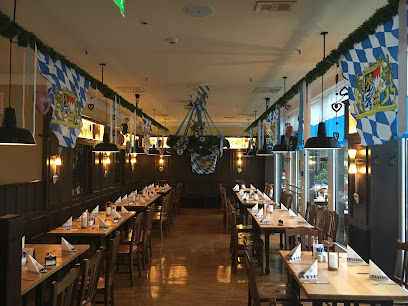
Pantry
1.3 km
Discover an eclectic dining experience at Pantry in Berlin - where fusion cuisine meets elegance in the heart of Mitte.

Johnny's Bar - Karibisches Restaurant
1.3 km
Experience authentic Caribbean flavors at Johnny's Bar in Berlin - where every dish tells a story and every sip transports you to paradise.

acht&dreissig
1.4 km
Savor traditional German dishes at acht&dreissig in Berlin, where authentic flavors meet inviting ambiance.

GOLVET
1.4 km
Experience unparalleled fine dining at GOLVET, where modern European cuisine meets breathtaking views in the heart of Berlin.

Schnitzelei Mitte
1.5 km
Experience authentic German cuisine at Schnitzelei Mitte, featuring exquisite schnitzels and tapas in Berlin's lively Mitte district.

BLESS Restaurant
1.5 km
Experience the vibrant fusion of Vietnamese and Asian cuisine at BLESS Restaurant in Berlin's Mitte district.
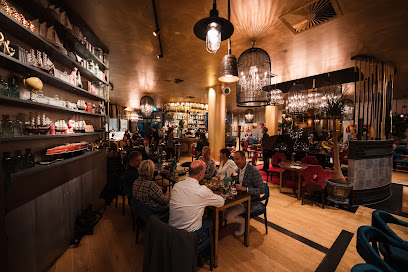
Markets, malls and hidden boutiques
BERLIN STORE
0.7 km
Discover unique souvenirs and local crafts at the Berlin Store, the perfect stop for tourists seeking a piece of the city's vibrant culture.

Mall of Berlin
0.8 km
Explore the Mall of Berlin: A shopping haven in the heart of the city with endless retail, dining, and entertainment options.
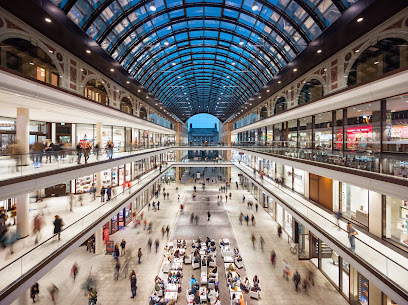
I love Berlin
0.8 km
Explore 'I Love Berlin' for unique souvenirs and gifts that embody the vibrant culture and spirit of Berlin, located in the heart of the city.

Galeries Lafayette
1.0 km
Discover the allure of luxury shopping and gourmet dining at Galeries Lafayette in the heart of Berlin, a must-visit for every traveler.

Wolford Boutique Berlin
1.0 km
Experience luxury and elegance at Wolford Boutique Berlin, your go-to destination for exquisite women's fashion and lingerie.

The Playce
1.1 km
Experience shopping bliss at The Playce in Berlin, where high-quality stores meet delightful dining and vibrant entertainment.

The Square Berlin East
1.2 km
Explore a unique blend of fashion, literature, and home decor at The Square Berlin East, a boutique gem in the heart of Berlin's Mitte district.

Berlin Loves You
1.3 km
Explore unique souvenirs and local treasures at 'Berlin Loves You', the quintessential store for capturing the spirit of Berlin.
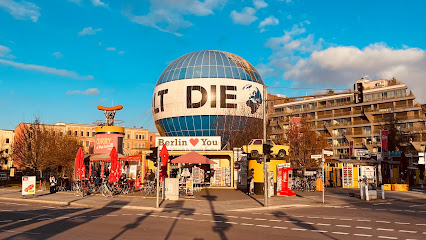
Vielfach Berlin -Das Kreativkaufhaus-
1.4 km
Explore Vielfach Berlin, a unique gift shop and art gallery offering handcrafted souvenirs and local art that capture Berlin's vibrant creative spirit.

Shop Passage im Humboldt Forum
1.7 km
Explore a captivating selection of gifts and unique souvenirs at Shop Passage im Humboldt Forum, a must-visit destination in Berlin.
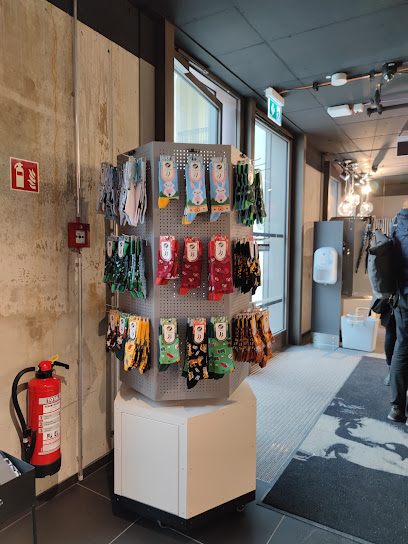
Andreas Murkudis
1.9 km
Explore avant-garde fashion at Andreas Murkudis, a unique clothing store in Berlin's Mitte district showcasing curated collections.

AMPELMANN shop in the Hackescher Markt
1.9 km
Explore the charming AMPELMANN shop in Hackescher Markt for unique Berlin souvenirs that capture the city's spirit and culture.

Redbear Berlin
1.9 km
Explore Redbear Berlin, a stylish boutique offering unique fashion pieces in the vibrant Mitte district, perfect for discerning shoppers.

Hackesche Höfe
1.9 km
Explore Hackesche Höfe, a vibrant shopping and cultural hub in Berlin, featuring unique shops, diverse dining options, and artistic experiences.

Fashionfouvintage
2.1 km
Explore Fashionfouvintage in Berlin for a unique vintage clothing experience, showcasing timeless styles from various eras that inspire and delight.

Essential bars & hidden hideouts
Windhorst
0.7 km
Experience Berlin's vibrant nightlife at Windhorst, an upscale cocktail bar serving exquisite drinks in a stylish atmosphere in the heart of Mitte.

The Curtain Club
0.8 km
Experience elegance at The Curtain Club, Berlin's premier bar with exquisite cocktails and a chic atmosphere in the heart of Potsdamer Platz.

Posh Bar
1.0 km
Discover the elegance of Posh Bar in Berlin, where expertly crafted cocktails meet a chic atmosphere in the heart of the city's nightlife.
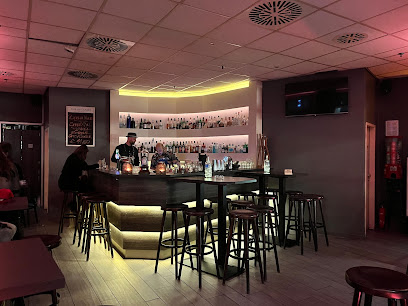
meisterschueler
1.1 km
Discover Meisterschueler in Berlin – a captivating cocktail bar that intertwines art and mixology for an unforgettable experience.
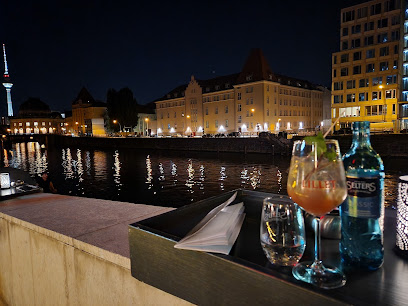
Newton Bar
1.1 km
Experience the vibrant nightlife of Berlin at Newton Bar, where stylish cocktails and a chic atmosphere await in Mitte.

Melody Nelson bar
1.3 km
Discover the vibrant atmosphere of Melody Nelson, Berlin's chic bistro and cocktail bar, perfect for unwinding and socializing.

X-Terrain
1.4 km
Discover the eclectic vibe of X-Terrain, a unique bar in Berlin's Mitte with creative cocktails and a lively atmosphere perfect for nightlife enthusiasts.

Bar Amélie
1.4 km
Discover Berlin's vibrant cocktail scene at Bar Amélie, where expertly crafted drinks meet a cozy atmosphere in the heart of the city.

Charlie's Beach
1.4 km
Discover the perfect blend of relaxation and excitement at Charlie's Beach, a vibrant bar in Berlin's Mitte district with delightful drinks and a lively atmosphere.
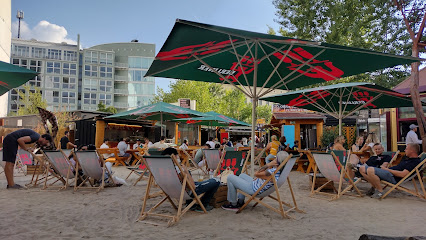
Reingold
1.5 km
Experience the vibrant nightlife of Berlin at Reingold, a cocktail bar in Mitte known for its expertly crafted drinks and lively atmosphere.

TheCoven Bar
1.8 km
Discover the allure of TheCoven Bar, a cocktail haven in the heart of Berlin's Mitte district, where innovative drinks meet enchanting ambiance.

My Bar ICI
1.8 km
Discover the vibrant atmosphere and exquisite drink selection at My Bar ICI, a must-visit bar in the heart of Berlin's Mitte district.
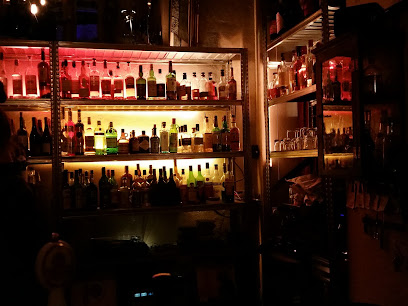
The Unique Bar Berlin
1.9 km
Discover the vibrant nightlife at The Unique Bar Berlin, where exquisite cocktails and a stylish atmosphere await you in the heart of the city.

Berlin Icebar
1.9 km
Discover the magic of Berlin Icebar, where cocktails meet ice sculptures for a unique nightlife experience in the heart of the city.
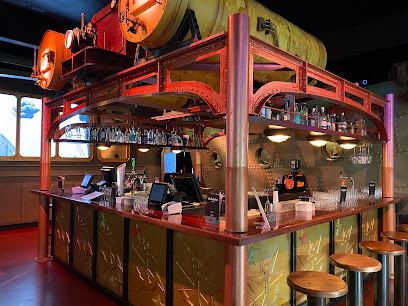
Victoria Bar
2.0 km
Experience the vibrant nightlife of Berlin at Victoria Bar, known for its exquisite cocktails and stylish atmosphere.
